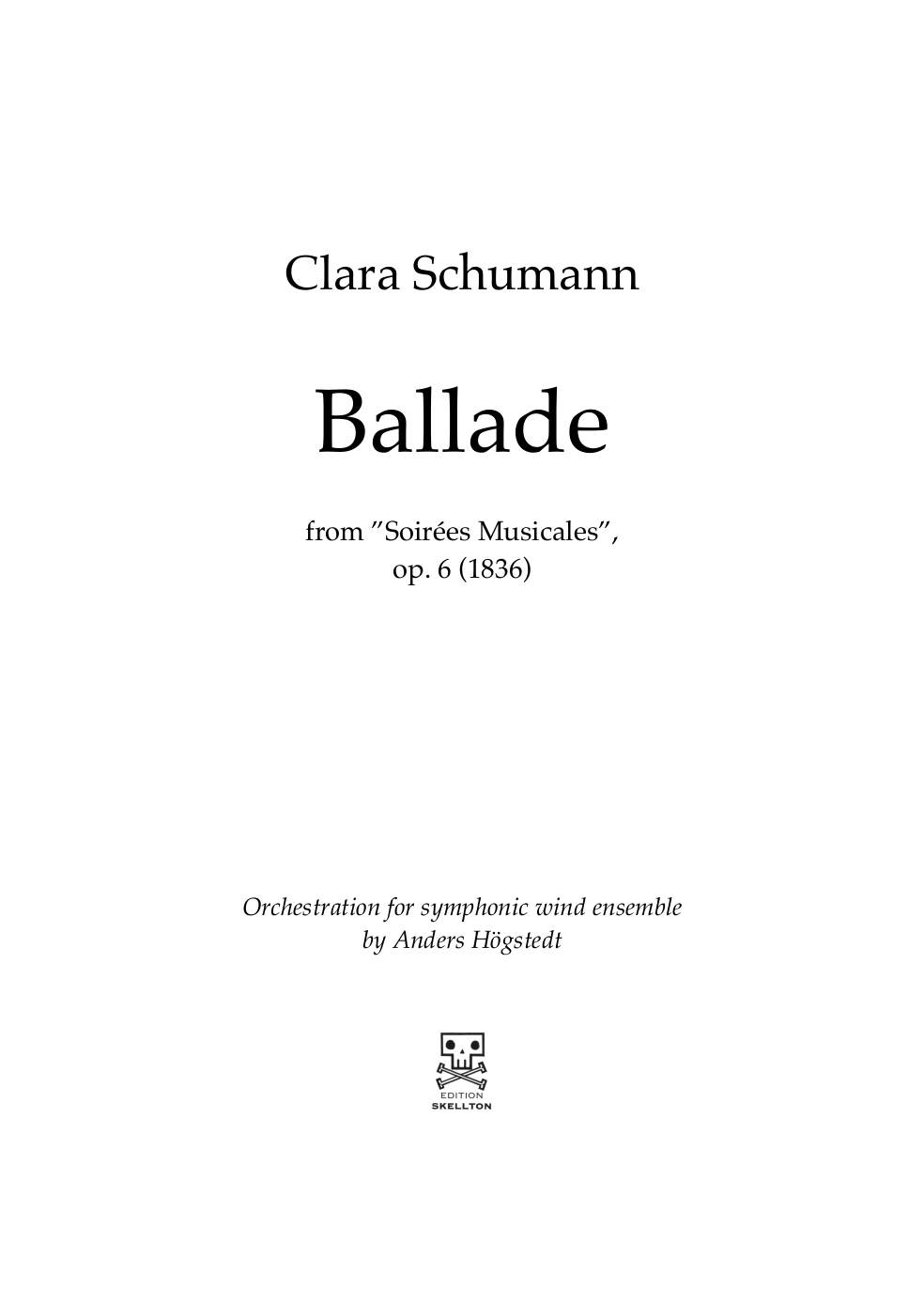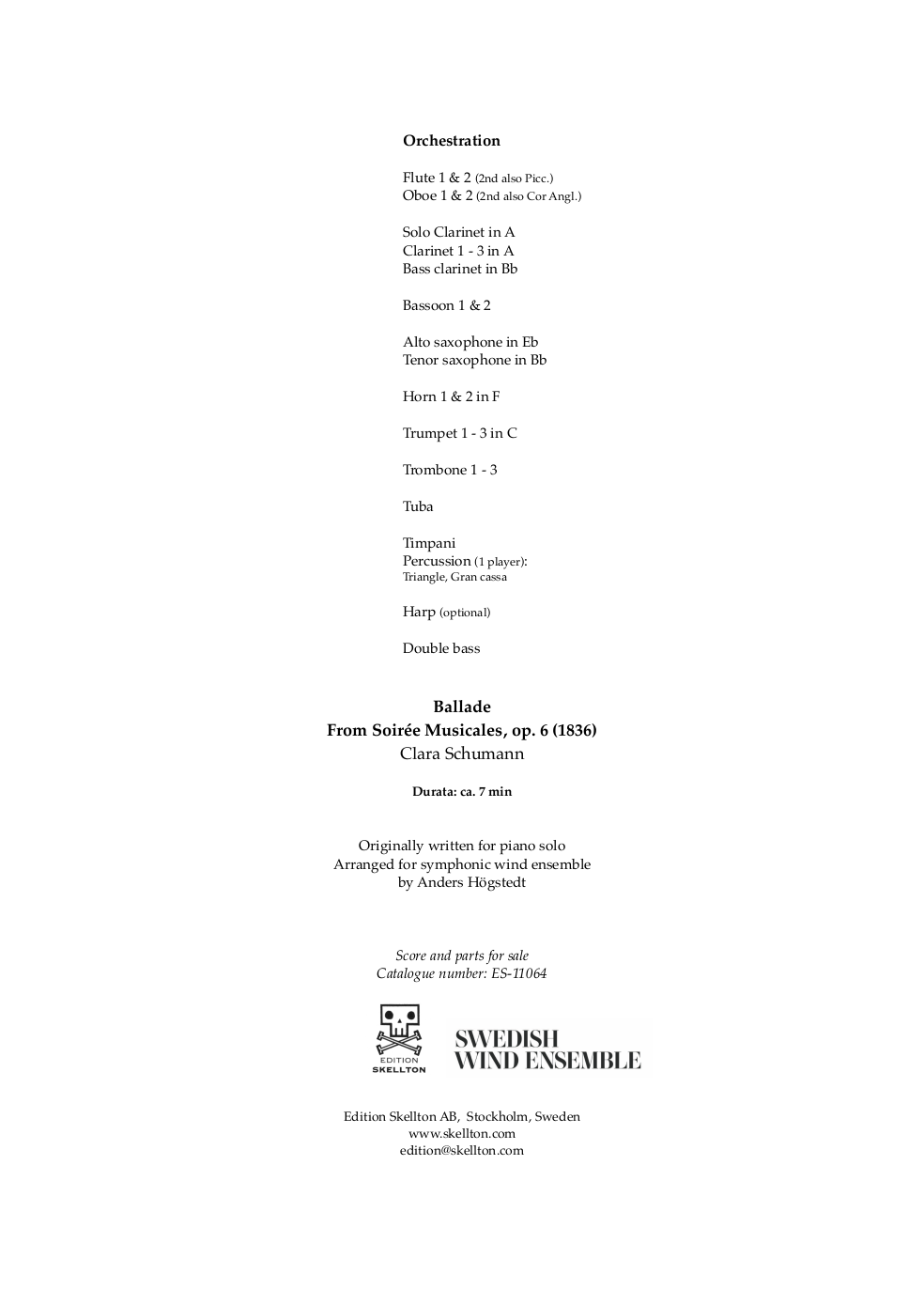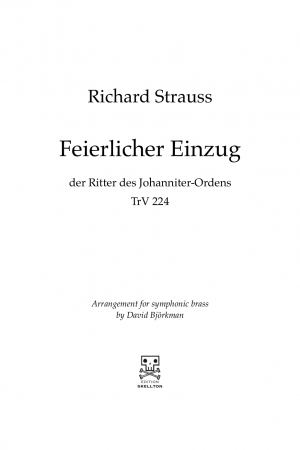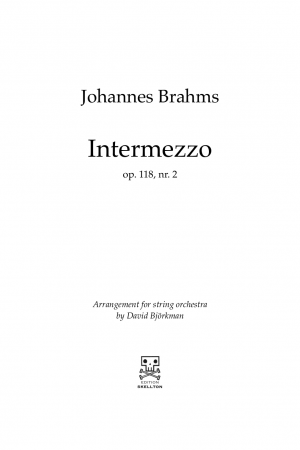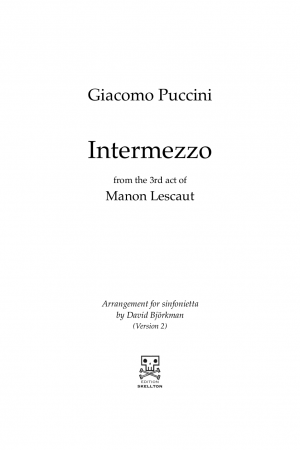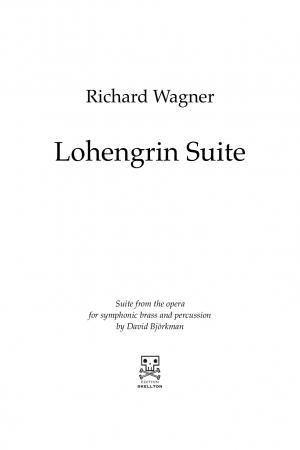A secret musical code between two illicit lovers? Clara Wieck and Robert Schumann were not yet a couple when Clara Wieck wrote her opus 6, Soirées musi- cales, between 1834 and 1836. He was nine years her senior, and was her father’s student. She was a young – but great – piano star. The teenage Clara Wieck daz- zled an international audience with her perfect piano technique and her unusually expressive playing. Since then, there has been speculation about whether her expressive playing style may have been linked to her otherwise confined child- hood and youth. Her controlling father insisted on writing Clara’s diary himself, and while her parents lived together, their broken-down marriage traumatised the young girl so much that she did not speak until she was over four years old. It was through music that this young woman spoke – on stage, but also in sheet music. Her music encapsulates the legend of the ‘romantic artist’, and speaks symbolically about emotions that words cannot convey.
At this time, Clara and Robert were in such close musical symbiosis that they almost composed each other’s music. “Clara is the inspiration for all my finest piano works,” wrote Robert in 1839 to his former teacher Heinrich Dorn. Robert’s feelings were also expressed consciously in his score for Quasi variazioni: Andan- tino de Clara Wieck. The theme of the second movement of the sonata in F minor begins on a C and ends on an F. This falling fifth interval is a possible musical code between the pair.
Ballade is the final movement of Soirées musicales op. 6. After a two-bar introduction, the main melody begins with a falling fifth. The movement is an original composition for piano. Arranger Anders Högstedt allows the woodwind to lead the way in the dramatic melody that forms Ballade’s A section. The mood of the music is sensitive and intense, but still restrained, with a touch of melancholy that often appears in Wieck’s compositions. In the B section of the movement we encounter hidden depths. A chromatic theme bubbles away beneath the surface. It repeats itself down in the depths, a warning perpetuum mobile, as if Wieck wants to tell us that there is something other than just this beautiful melody in her mind.
Högstedt has given the bass clarinet this restless role. The instrumentation brings to mind Richard Wagner, who incorporated the bass clarinet into the operatic orchestra, often as a symbol of sadness or melancholy.
Soirées musicales was dedicated to the pianist and family friend Henriette Voigt (1908–39). Weick wrote her next work, piano concerto op. 7, for herself, and this was the only piece she ever composed for an orchestra. Perhaps the time had not yet come for a woman – even one of her calibre – to position herself as the creator of the greatest musical format. Nevertheless, Wieck went on to influence music like few other women in the history of Western music:
“Like the buds before the wings of colour are exploded into splendour, captivating and significant to view, like all things that contain the future within themselves.” (Robert Schumann about Soirées musicales in Neue Zeitschrift für Musik, 1837.)
About the 2021 Swedish Wind Ensemble recording project and collaboration between arranger the Swedish Wind Ensemble, Anders Högstedt and Edition Skellton:
“The Swedish Wind Ensemble recorded these works in the same year that Sweden marked the centenary of women’s voting rights. The recording took place at the Musikaliska concert hall in the heart of Stockholm. The Royal Swedish Academy of Music has convened here for a number of musical and historical events over the years, including the presentation of the first Nobel Prize in 1901. The venue also
saw the first Swedish performance of Helena Munktell’s work Breaking Waves, during the Academy’s formal gathering. She, Elfrida Andrée and Clara Schumann were all members of the Academy. Today, Musikaliska is the home of the Swedish Wind Ensemble, and an important arena for acoustic music.
All the works were specially arranged for the Swedish Wind Ensemble by it’s permanent arranger, Anders Högstedt. The pieces were originally written for a symphony orchestra or piano. But is it appropriate to record music adapted for an ensemble, rather than performing it in its original format? The Swedish Wind Ensemble certainly believes so, with its tradition of bringing music closer to the
people. Today, the Swedish Wind Ensemble continues the tradition of bringing live music closer to the people, and in the anniversary year of universal suffrage it felt natural to showcase compositions by both Swedish and international women. Ever since its ‘Skip the Full Beard’ initiative in 2010, the orchestra has developed, arranged and performed a number of works written by women.
With this recording, we want to share some of our work over the years. In this way, we hope that wind ensembles will be able to perform the repertoire we have arranged, thereby giving even more audiences the opportunity to enjoy this music.”
To add parts to your order, please click here:
Printed score: 300 sek (B4 format, 20 pages. Coil bound, frosted plastic front, hardback)
Score in PDF: 240 sek (B4 format, 20 pages)
Printed parts: à 50 kr (B4 format. 3-4 pages, Munken paper)
Parts in PDF: à 40 kr (B4-format. 3-4 pages.)
In the printed material, you get 26 parts: 26 x 50 sek = 1.300 sek
Buying the material in pdf, you get 26 parts : 26 x 40 sek = 1.040 sek
Please contact us to pre-adjust or change the order.

